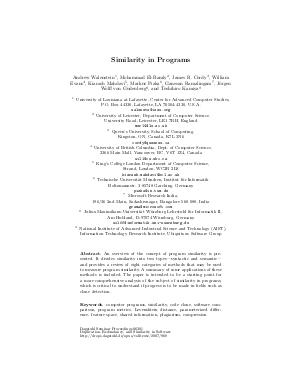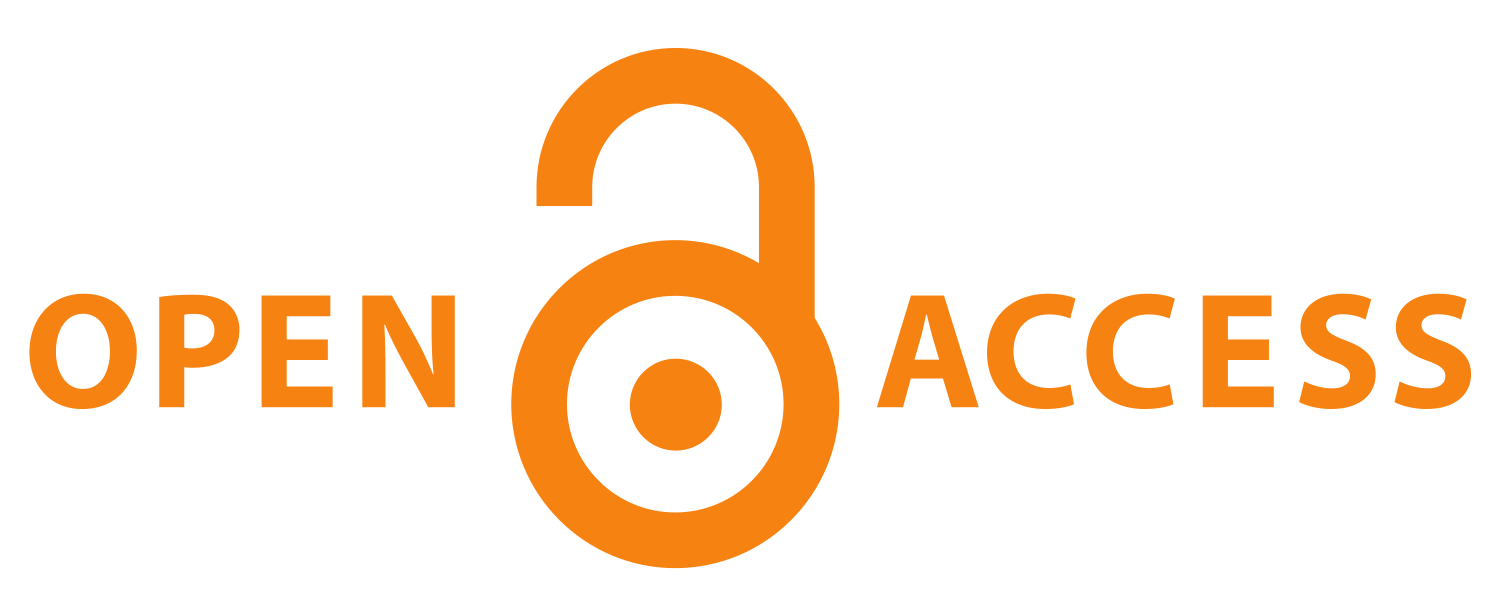Similarity in Programs
Authors Andrew Walenstein, Mohammad El-Ramly, James R. Cordy, William S. Evans, Kiarash Mahdavi, Markus Pizka, Ganesan Ramalingam, Jürgen Wolff von Gudenberg
-
Part of:
Volume:
Dagstuhl Seminar Proceedings, Volume 6301
Part of: Series: Dagstuhl Seminar Proceedings (DagSemProc) - License:
 Creative Commons Attribution 4.0 International license
Creative Commons Attribution 4.0 International license
- Publication Date: 2007-04-19
File

PDF
DagSemProc.06301.11.pdf
- Filesize: 148 kB
- 8 pages
Document Identifiers
Subject Classification
Keywords
- Computer programs
- similarity
- code clone
- software comparison
- program metrics
- Levenshtein distance
- parameterized difference
- feature space
- shared
Metrics
- Access Statistics
-
Total Accesses (updated on a weekly basis)
0Document
0Metadata
Abstract
An overview of the concept of program similarity is presented. It divides similarity into two types - syntactic and semantic - and provides a review of eight categories of methods that may be used to measure program similarity. A summary of some applications of these methods is included. The paper is intended to be a starting point for a more comprehensive analysis of the subject of similarity in programs, which is critical to understand if progress is to be made in fields such as clone detection.
Cite As Get BibTex
Andrew Walenstein, Mohammad El-Ramly, James R. Cordy, William S. Evans, Kiarash Mahdavi, Markus Pizka, Ganesan Ramalingam, and Jürgen Wolff von Gudenberg. Similarity in Programs. In Duplication, Redundancy, and Similarity in Software. Dagstuhl Seminar Proceedings, Volume 6301, pp. 1-8, Schloss Dagstuhl – Leibniz-Zentrum für Informatik (2007)
https://doi.org/10.4230/DagSemProc.06301.11
BibTex
@InProceedings{walenstein_et_al:DagSemProc.06301.11,
author = {Walenstein, Andrew and El-Ramly, Mohammad and Cordy, James R. and Evans, William S. and Mahdavi, Kiarash and Pizka, Markus and Ramalingam, Ganesan and von Gudenberg, J\"{u}rgen Wolff},
title = {{Similarity in Programs}},
booktitle = {Duplication, Redundancy, and Similarity in Software},
pages = {1--8},
series = {Dagstuhl Seminar Proceedings (DagSemProc)},
ISSN = {1862-4405},
year = {2007},
volume = {6301},
editor = {Rainer Koschke and Ettore Merlo and Andrew Walenstein},
publisher = {Schloss Dagstuhl -- Leibniz-Zentrum f{\"u}r Informatik},
address = {Dagstuhl, Germany},
URL = {https://drops.dagstuhl.de/entities/document/10.4230/DagSemProc.06301.11},
URN = {urn:nbn:de:0030-drops-9681},
doi = {10.4230/DagSemProc.06301.11},
annote = {Keywords: Computer programs, similarity, code clone, software comparison, program metrics, Levenshtein distance, parameterized difference, feature space, shared}
}
